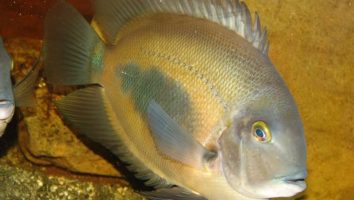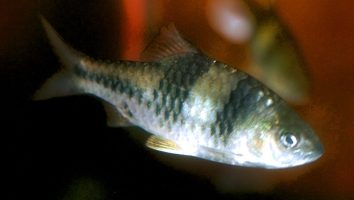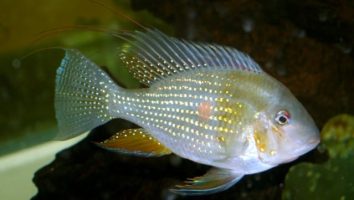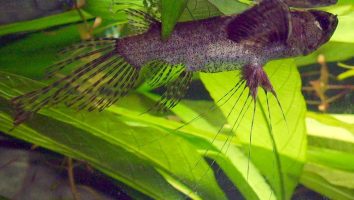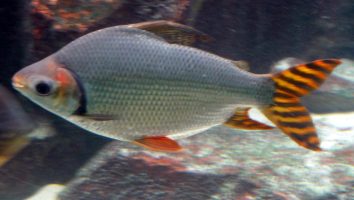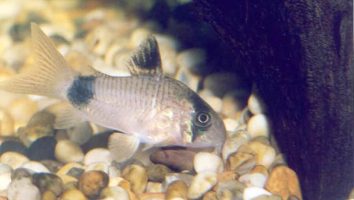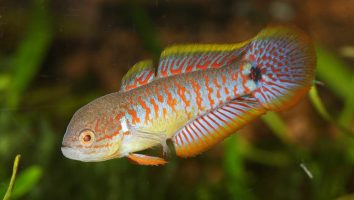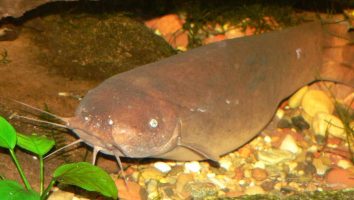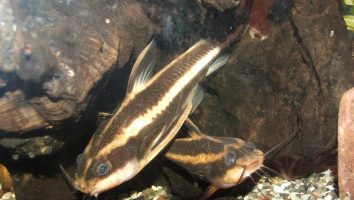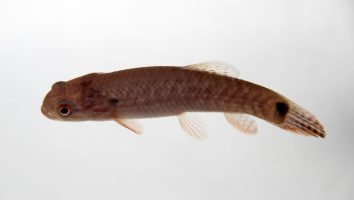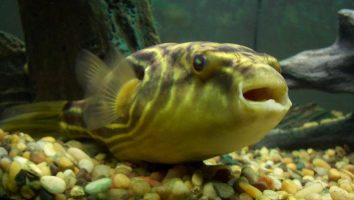The pineapple pleco is a beautiful and unique freshwater fish that is perfect for the beginner aquarist. They are very easy to care for and are very tolerant of different water conditions.
Pineapple plecos are also very hardy and can live in a wide range of temperatures. They are a perfect fish for someone who is just starting out in the fishkeeping hobby.
In this guide, we will go over everything you need to know about pineapple pleco care. We will cover topics such as diet, tank size, tank mates, and more.
Table of contents
Species overview
Pineapple plecos (scientific name: Panaqolus albivermis) are native to the Amazon river basin in South America.
They are a relatively small pleco species that only grows to be about 4-5 inches (10-12 cm) in length.
Pineapple plecos are a very peaceful species that does well with other peaceful fish. They are a good addition to most community tanks.
The most notable feature of the pineapple pleco is the unique pattern on its body. This pattern is what gives this fish its common name.
Appearance
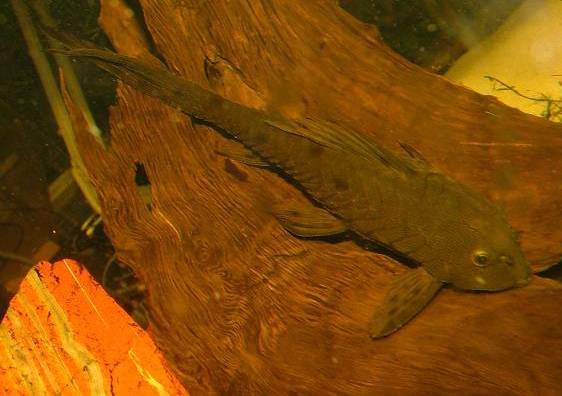
The first thing you’ll notice about this little pleco is the unique pattern on their body. This fish has a light brown base color that’s covered in dark brown spots.
The spots on their body are very distinct and give them a bit of a “pineapple” appearance (thus their name). These spots are more prominent on their dorsal half and get lighter towards their belly.
Pineapple plecos have a long and slender body shape. They have a large head with a protruding lower jaw.
Their dorsal fin is rather tall and starts about halfway back on their body. The first half of this fin is covered in dark spots while the back half is clear.
Their anal and pectoral fins are both fairly small. They have a forked caudal fin that’s slightly taller than their dorsal fin.
Lifespan
In captivity, the pineapple pleco typically has a lifespan between 5 and 10 years. However, there have been reports of them living up to 15 years in some cases!
As with any other pet, their lifespan will be greatly impacted by the quality of care they receive. Things like poor water quality, stress, and a suboptimal diet can all lead to a shortened lifespan.
Size
The maximum size of a Pineapple pleco is about 2 inches in length when fully grown. It’s not uncommon for these fish to stop growing at 1 inch depending on their level of care and genetic factors.
Tank
Tank Size
The minimum tank size for a pineapple pleco is 30 gallons. However, we recommend going up to a 50-gallon tank if you want to provide them with the best possible environment.
Pineapple plecos are active fish that enjoy swimming and exploring their surroundings. They also tend to be quite peaceful, making them a good choice for community tanks. However, they do need a little bit of extra space to feel comfortable and secure in their environment.
Water Parameters
The pineapple pleco is a tropical fish, so it requires warm water with a consistent temperature. They’re also a bit more sensitive to changes in pH and water hardness.
For that reason, you’ll need to pay close attention to these parameters and make sure they stay within the ideal range.
If you can manage that, you’ll have a happy, healthy pineapple pleco that will thrive in your aquarium.
Here are a few water parameters to keep in mind.
- Water temperature: 72 to 82 degrees Fahrenheit
- pH levels: 6.5 to 7.5
- Water hardness: 2 to 8 dGH
- Alkalinity Levels: 4-8 dKH
What To Put In Their Tank
As we’ve said before, plecos are a species of fish that love to hide. This is especially true for the pineapple pleco.
You’ll want to make sure that their tank has plenty of hiding spots. This can be accomplished in a number of ways, but the most common is to use driftwood and rocks.
Plecos are also suckerfish, which means they love to attach themselves to surfaces. Driftwood is a great option for this since it provides them with a place to stay while also giving them something to graze on.
Rocks are another good choice, but make sure they’re not too sharp. You don’t want your pleco getting cut up every time it tries to move around.
The substrate in their tank is also important. Plecos are bottom-dwellers so they spend a lot of time in contact with it. A soft substrate like sand is going to be much more comfortable for them.
Common Diseases
Pineapple plecos are pretty hearty fish, but that doesn’t mean they don’t get sick from time to time. The most common ailment that these fish experience is Ich.
Ich is a pretty widespread disease, and it’s one that can affect any freshwater fish. It’s caused by a parasite that attaches itself to the fish and begins to feed off of them.
The most common symptom of ich is small white spots that appear on the body of the fish. If left untreated, ich can be fatal.
Fortunately, ich is relatively easy to treat. There are a number of different medications that can be used to kill the parasite.
The best way to prevent ich (or any other disease) is to maintain clean and stable water conditions. A well-maintained tank will go a long way in keeping your fish healthy and disease-free.
Behavior & Temperament
The pineapple pleco is a peaceful bottom-dweller that spends most of its time scavenging the substrate for food. These fish are relatively shy, so they prefer to stick to the shadows and hide when they can.
Although they are generally peaceful, pineapple plecos can be a bit territorial when it comes to their food. They may not attack other fish, but they can become aggressive when they feel like their food is being threatened.
Pineapple plecos are nocturnal, so they are most active at night. This is when they will come out to forage for food. During the day, they will often hide in caves or other dark places in the tank.
Tank Mates
The pineapple pleco is a peaceful and easygoing fish. As a result, it can get along with most other fish species.
That said, there are a few things to keep in mind when choosing tank mates for a pineapple pleco.
First, these fish come from slow-moving waters in the Amazon. As a result, they’re not used to a lot of water movement.
That means you should avoid choosing fish that require a lot of current or agitation in the water.
Secondly, pineapple plecos are bottom-dwellers. They tend to stay near the substrate and don’t venture up into the water column very often.
Because of this, it’s best to choose tank mates that occupy different areas of the tank. That way, everyone has their own space and there’s less competition for food.
Some good pineapple pleco tank mates include:
- Tetras
- Danios
- Rasboras
- Gouramis
- Corydoras Catfish
- Plecos
Breeding
The pineapple pleco is a beautiful and unique fish that can be a bit challenging to breed. They’re not the most common fish in the aquarium trade, so there isn’t a ton of information out there.
The good news is that they’re not impossible to breed. With the right setup and some patience, you can successfully breed pineapple plecos.
The first step is to set up a breeding tank. It should be at least 30 gallons and have a sandy bottom. Plecos like to dig, so the sand will give them a place to do that.
You should also add some driftwood and rocks for hiding places. Plecos are shy fish, so they need a lot of places to hide.
Pineapple plecos are also sensitive to water quality. Make sure to do regular water changes and keep an eye on the ammonia and nitrite levels.
When everything is ready, add two males and two females to the tank. Keep an eye on them to make sure they’re getting along. If everything goes well, you should start to see the females getting larger. That’s a sign that they’re full of eggs.
The next step is to remove the male plecos. You only need one male for breeding, and multiple males can be aggressive.
Once the eggs are laid, the male will guard them. He’ll also fan them with his fins to keep them clean and oxygenated.
The eggs will hatch in about a week. When they do, you can start feeding the fry brine shrimp or other small live foods.
Pineapple plecos are not the easiest fish to breed, but it’s definitely possible with some patience and effort.
Conclusion
The pineapple pleco is a really cool fish that is perfect for the beginner aquarist. They’re easy to care for, relatively hardy, and can add a splash of color to your tank.
If you’re looking for a pleco that is a little bit different than the rest, then this is the fish for you. We think you’ll be really happy with them!

